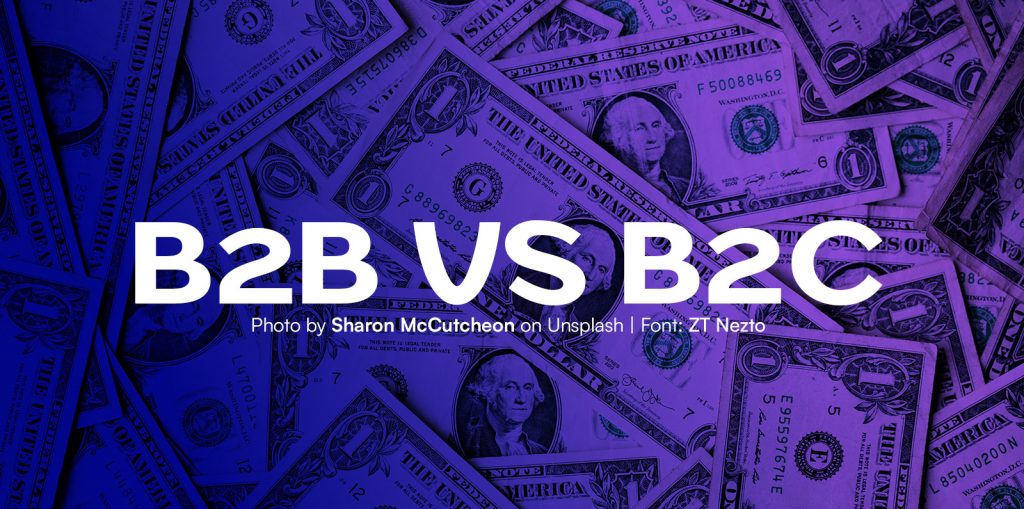Does marketing applied to a B2B model differ from that applied to a B2C model? Are the techniques used in one model useful in the other? Are the same tools utilized? Whether your business follows a B2B or B2C model, we want to provide our perspective on the differences between these models. For now, we’ll leave models like B2A, G2C, B2G for another day.
Marketing and anglicisms always go hand in hand. B2B stands for business to business, which refers to businesses that target other businesses (e.g., a wholesaler or service provider for other companies). B2C, business to consumer, refers to businesses targeting the end consumer.
Given the fundamental difference between both business models, it’s expected that the required marketing will be different in each case.
Marketing for B2C Models
The evolution of marketing has historically been linked to B2C models, through years of experimentation and learning. In these business models, one must consider:
- The sale of products or services is aimed at the end customer.
- Although the number of customers is higher, the average per-customer ticket value is generally lower.
- The needs satisfied for the general consumer typically have basic characteristics and focus on more everyday or general desires.
- The customer’s decision-making process is, in most cases, emotional.
- Decisions are made in the short to medium term.
Digital marketing, through proper segmentation (preferences, gender, habits) or tools like Inbound Marketing, allows the effective targeting of necessary actions (e.g., advertising).
Marketing in the B2B Model
The evolution of B2B marketing initially relied on experimentation at industrial or technology fairs. At these events, sales or similar departments conducted demonstrations to introduce themselves and establish business relationships. Today, the conference and trade show model remains, but digitization has reshaped the way in which this commercialization is conducted. Although demonstrations, face-to-face interactions, and word of mouth are crucial in this model, the advent of digital models opens doors to a globalized market and offers new opportunities for companies.
Companies that offer products and services to other businesses can make the businesses interested in their offerings. This is where actions like Inbound Marketing can be useful, providing high-quality content that adds value and reinforces authority.
In this case, you must consider:
- The solution to needs is usually focused on a niche market.
- The content and communication strategy aimed at attracting customers should be tailored to the needs of the company.
- Related to the previous point, it should be clear that decision-making in a business can sometimes involve more than one or two people from different areas.
- Relationships with potential customers are typically long-term.
- The decision-making process is more rational than in the B2C model, as it generally focuses on technical aspects.
B2B Marketing Strategy
When implementing a marketing strategy in a B2B business model, it’s essential to pay attention to the following aspects:
- Practical and efficient resolution of companies‘ problems.
- Establishing stable and long-term communication relationships with businesses.
- Clear, concise, and truthful communication.
- Maintaining a trustworthy website that conveys strength through valuable content.
- Optimizing organic positioning (SEO).
- Analyzing the sector in which you focus and determining which channels are present.
- Considering that social media is a source of generating contacts of interest, adapting tone and communication style to each platform.
- Enhancing online positioning through investments in advertising: Social Ads, press releases, SEM, or promoted posts.
In the digital age, B2B marketing should grab the attention of individuals within the target organizations that are our customers or potential customers and demonstrate that it aims to address the issues present in the organizations and their interests. This way, it’s easier to build long-term relationships that will also attract potential customers.




